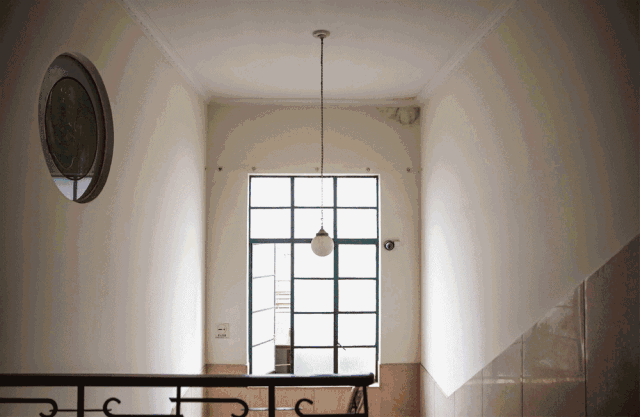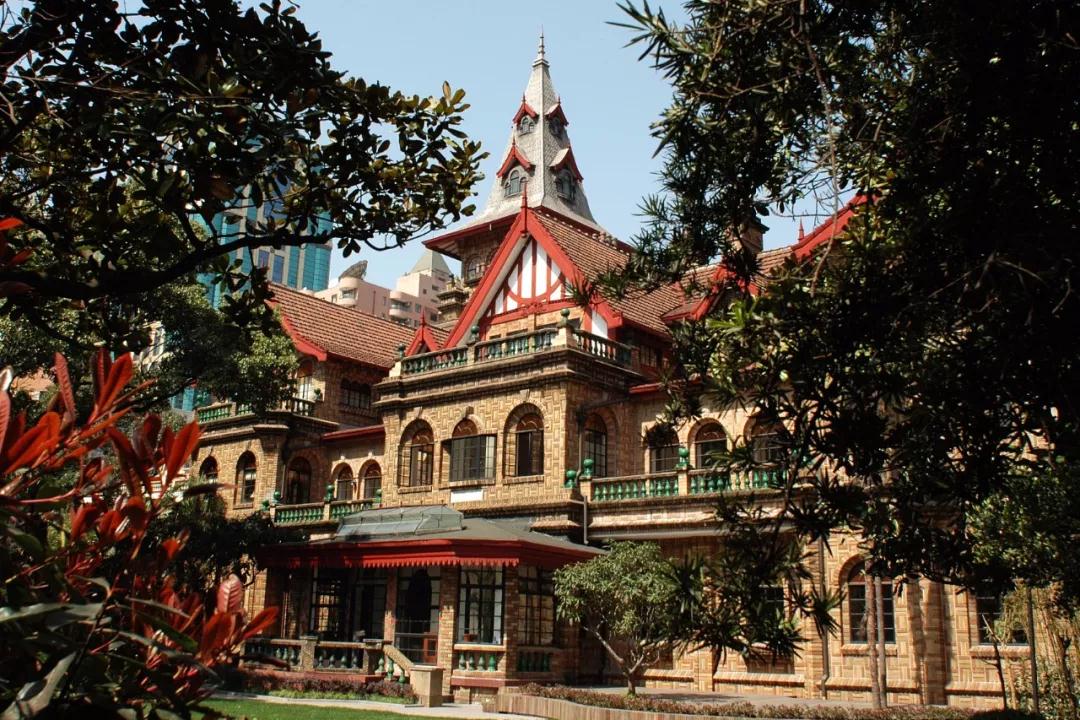City Services
You are here:
- Home
- City Services
- Tourist Service
- Recommended Itinerary
Nearly 40 century-old historic buildings will be open free of charge for a long term!
The Bund
is a magical place.
It stretches from the Waibaidu Bridge in the north to Jinling Road (E) in the south.
About 1.5 km long, with Huangpu River on its east
and buildings in various styles on its west!

On the Bund, this treasure land,
the century-old “expo of exotic building clusters” never ends!
They stand in the metropolis, reproducing the glamor of the former “Wall Street in the Far East”!
When we walked on the Bund before, we could only see the exterior of the buildings.
Today, we finally can see the interior of those buildings.
Without paying a cent!
From June, along the Bund,
7 classic historic buildings, including the Peace Hotel
will be open to the public for free!
Apart from the 7 historic buildings on the Bund,
in fact, there are dozens of historic buildings in Shanghai open to the public free of charge.
Most of these historic buildings are over 100 years old.
In the fixed time and fixed areas,
they form fixed routes,
so that you can walk into the historic buildings,
to explore the boundless charm of Shanghai-style culture.
Some people have waited decades for this moment!
Waitanyan
Age: 146 (built in 1872)

No. 1 Waitanyuan formerly was the British consulate-general in Shanghai. The existing main building was completed in 1872 (the 11th Year of the Reign of Emperor Tongzhi of the Qing Dynasty). The façade is in a British Renaissance style, with the features of veranda architecture. It is an outstanding modern building in Shanghai. It has been listed as a "national key protected cultural relic site" along with the Bund srchtectueal complex.
Address: 33 Zhongshan Road (E-1)
North Building of the Peace Hotel
Age: 89 (built in around 1929)

It is a Chicago school gothic building, 77 m high, with 12 floors. For nearly 90 years, celebrities and politicians from all over the world have appeared here, writing legends with wonderful stories.
In 2010, the Peace Hotel formally reopened. After renovation, it became a Fairmont hotel. The famous nine national characteristic suites continue to record the Peace Hotel’s enduring legend. In addition, the Sassoon presidential suite on the top floor was occupied by Victor Sassoon, the hotel's original founder.
Address: 20 Nanjing Road (E)
Bank of China Building
Age: 81 (built in 1937)

Bank of China Building is the only building designed and built by Chinese among the buildings on the Bund (on Zhongshan Road E-1). It was designed to have 34 storeys and become the highest building in Shanghai. But the owner of Sassoon House next to it opposed the plan. The lawsuit went from Nanjing to London. In the end, Bank of China gave up the original plan. The new building is 1500px shorter than Sassoon House.
Bank of China Building has an east building and a west building. It adopts the pyramid roof in Chinese national style. The handrails and panes are full of Chinese characteristics. On the façade, there are two lines of hollow pattern on the two sides of the main part on each storey.
Address: 23 Zhongshan Road (E-1)
Shanghai Pudong Development Bank Building
Age: 95 (built in 1923)

Shanghai Pudong Development Bank is a new Greek building. It formerly was the Shanghai Branch of HSBC. It was the largest bank building in the Far East and the second largest bank building in the world, next only to the Bank of Scotland. Today, it is still recognized as the most beautiful one among the buildings on the Bund.
The dome of the building’s octagonal hall is more than 20 m above the ground, with 8 mosaic murals formed by hundreds of thousands of pieces of colored glass, each a few square centimeters big. The total area is nearly 200㎡. They respectively depict the architecture in 8 cities in the early 1920s, i.e. Shanghai, Hong Kong, London, Paris, New York, Tokyo, Bangkok, Calcutta, with mythological figures.
Address: 10-12 Zhongshan Road (E-1)
Shanghai Municipal Archives the Bund
Age: 59 (built in 1959)

Shanghai Archives the Bund formerly was called “Compagnie des Messageries Maeitimes”, which later was renamed “Pujiang Building”. The building is the Gothic style. The shape is rectangular, simple and smooth. It is the first modern commercial building on the Bund. On April 23, 2004, Pujiang Building opened as the new Shanghai Archives building on the Bund.
Address: 9 Zhongshan Road (E-2)
Shanghai Telecom Museum
Age: 97 (built in 1921)

Shanghai Telecom Museum formerly was the Telegraph Building built by the Great Northern Telegraph Co. of Denmark in 1921. The floor area is about 2,500㎡. The six exhibition areas truly display the development in twists and turns, revitalization in struggle and transformation in reform of the century-old telecom industry.
Address: 34 Yan’an Road (E)
Shanghai The Bund Historical Memorial Hall
Age: 23 (built in 1995)

The Bund History Museum is the youngest building open to the public this time. Visitors can see Shanghai’s development history from the development of the Bund displayed in the museum. The museum mainly exhibits historic pictures, supplemented with representative archives and objects, to show the historic changes in the Bund over the 150 years since its opening by modern multimedia means.
Address: 475 Zhongshan Road (E-1)
Sieh Yih Chapel
Age: 88 (built in 1931)

At the junction of Hami Road and Kele Road in Changning district, there is a church hidden in trees. When the sun is setting, it always reveals a touch of loneliness. It’s Sieh Yih Chapel, the first church designed by Hudec and Shanghai’s first cemetery church exclusive to church leaders.
This is a small but beautiful place. The church’s floorage is only 239㎡. This small building is a typical Byzantine architecture. It has a thick eastern European flavor. Its beautiful appearance is not inferior to the famous Moore Church.
Address: 1 Kele Road
Hudec Memorial Hall
Age: 88 (built in 1930)

Hudec, a Hungarian architect, left nearly 100 buildings in Shanghai, which make the most colorful part in Shanghai’s architectural culture and retain the most important memory of Shanghai. The Hudec Memorial Hall at 129 Panyu Road once was Hudec’s residence.
The building has white upper walls, brown stone tiles, exposed dark brown wood frames and reddish-brown lower brick walls. The steep double-pitched slate roofs, towering brick chimneys, symmetrical gables send out a thick British countryside flavor. Since 2013, it has been open to the public for free
Address: 129 Panyu Road
Former Site of St. John’s University
Age: 139

East China University of Political Science and Law Changning by Suzhou River is a place where history and reality blend. It formerly was the St. John’s University that was known as the “Oriental Harvard” and “Oriental Cambridge”. Founded in 1879, the buildings are 138 years old.
The campus isn't big, but it's unique. Distinctive Western buildings are mixed with some traditional Chinese buildings, simple and elegant, with a strong cultural atmosphere.
In 1952, in China’s nationwide university adjustment, St. John’s University was broken down and incorporated into many universities in Shanghai. The former site of St. John’s University was given to East China University of Political Science and Law. Some buildings are open to the public for free when the university is open.
Address: 1575 Wanhangdu Road
Former Site of the Editorial Dept. of Bolshevik
Age: over 90

This is a 136㎡fake 3-storey Western-style alley house. The hard bricks, porch with iron handrails, open front hall, white walls and Western decoration have a strong Shanghai flavor.
This building once was the Editorial Dept. of the early Chinese Communist Party organ Bolshevik (1927-1928). Today, its’ a Shanghai Youth Education Base. In the building, there are 4 exhibition rooms, which display the history of the Editorial Dept. the editorial board members, Changning District’s historic records of the revolution.
Address: 34 Lane 1376, Yuyuan Road
Former Site of the Shanghai Bureau of the Central Committee of the Chinese Communist Party
Age: 88 (built in 1930)

21 Lane 389, Jiangsu Road is a modern alley residence with deep secrets. It was the site of the Shanghai Bureau of the Central Committee of the Chinese Communist Party and the biggest secret service base of the Chinese Communist Party in the region governed by Kuomintang. Spy stories that appear in TV plays like “Lurk” and “The Message” really happened here. The place was not exposed until the liberation of China.
On July 1 last year, after a thorough repair, the building was formally opened to the public. Historic data and materials about the Shanghai Bureau of the Central Committee of the Chinese Communist Party are exhibited here, to unveil the past of the underground secret service that was buried deep in history.
Address: Lane 389 Jiangsu Road (in Shanghai Water Authority)
Moller Villa
Age: 82 (built in 1936)

Moller Villa occupies 5,000㎡ of land. The garden alone is nearly 2,000㎡. The villa was built because of a dream of Moller's daughter. Its’ a real dream castle.
This is a colorful fairy-tale villa with Norwegian steeples, Gothic spires, Chinese glazed tiles and dormers. Its interior is decorated like a luxury passenger liner. The wood carvings all depict a fleet at sea. Even the floor is laid with fine pieces of wood that make seaweed and kelp patterns. The thinnest wood pieces are only several millimeters wide.
There are many old pictures on both sides of the corridor leading to the lobby. They show the construction background and history of Moller Villa and Moller’s story of building up a family fortune in Shanghai.
Address: 30 Shaanxi Road (S), Jing’an
Yueyang Hospital’s Outpatient Clinic
Age: 82 (built in 1936)

44 Qinghai Road is now Yueyang Hospital’s Outpatient Clinic. The building once was the Vila Bayankara owned by Zhou Xiangyun, a real estate tycoon and one of the 8 big families in Shanghai in the late Qing Dynasty and the early Republic of China. During the War of Resistance Against Japanese Aggression, Zhou Xiangyun was a wealthy man with 80 million assets. Compared with today’s mansions, the level of this villa is even higher!
The whole building has 52 rooms. It has many functions that you can't expect: the bar and elevator that today’s villas must have; the water closet and water spittoon that were rare back then; the automatic shutter door and intercom between the gatehouse and the main building, which are not so commonly seen in China even today! This authentic Western-style building cost 400,000 French francs!
Address: 44 Qinghai Road, Jing’an
Opening Hours: all day